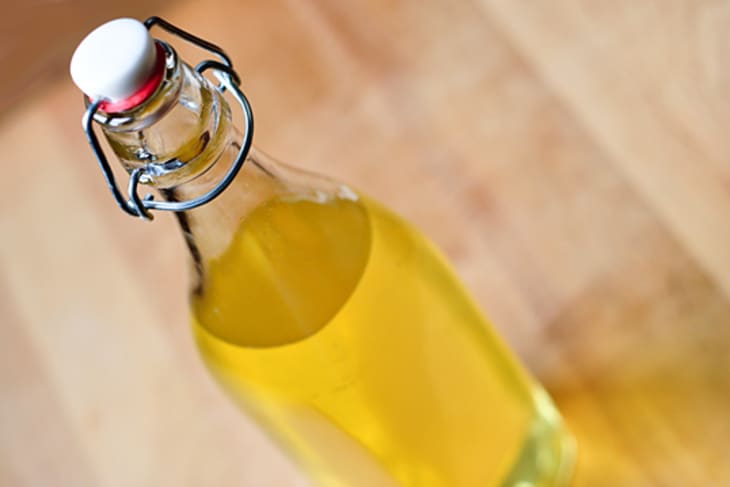Milk and Booze! How To Make Sweet Milk Liqueur

We love the idea of making our own liqueurs, and we’ve been wanting to try this milk liqueur ever since we saw it in David Leite’s most recent book The New Portuguese Table. It just seemed so unusual and fascinating. So we’ve come up with a recipe, and you’ll find our review and ideas for using this sweet liqueur below.
Tips For Making Homemade Milk Liqueur
- Infuse the liqueur for 10 days in a dark corner of your kitchen.
- Give the container a few shakes every day.
- Strain the mixture a few times to catch all those milk solids.
A Smooth Liqueur To Look Out For
The hardest part about this liqueur is waiting for it to infuse. It needs 10 days in a dark corner of your kitchen, where the vodka slowly turns from clear to bright yellow. Be warned: it looks completely disgusting. The milk coagulates and separates when mixed with the vodka, looking more like a science experiment gone wrong than anything you’ll ever want to serve your dinner guests.
But strained a few times to catch all those milk solids, the resulting liqueur is perfectly clear with a lovely sunshine yellow hue. It smells like a mixture of ice cream and malted milk balls. The liqueur has a smooth and syrupy mouthfeel and a rich, creamy flavor. It’s sweet, but with a more complex flavor than simple sugar: malty and slightly caramelized.
This is definitely a winner in our book. We can’t wait to make another batch and try a few different flavor variations.
Ideas For Using
- Split into several small bottles for presents. Wouldn’t these make a cute gift?
- Drink it neat. We like sipping a finger of this liqueur as is before bedtime. An adult version of a warm glass of milk, you might say!
- Mixed into cocktails. The sweet flavors of this liqueur go very well with bourbon and rum.
Homemade Milk Liqueur
Makes about 1 quart
Nutritional Info
Ingredients
- 2 cups
vodka
- 2 cups
whole or 2% milk (non-UHT pasteurized for best results*)
- 2 cups
granulated sugar
1/2 (or more) of lemon or other citrus, juice and rind**
Instructions
Mix everything together in a clean glass container with a tight-sealing lid. Shake vigorously and store in a cool, dark place for 10 days. Give the container a few shakes every day.
After 10 days, the liqueur is ready. Strain through a double-layer of cheese cloth or a coffee filter to catch the milk solids and clarify the liqueur. More rounds of straining will result in a cleaner, clearer liqueur.
Transfer to a clean container and store for up to several months.
Recipe Notes
Variations:
• Chocolate Milk Liqueur - David Leite's original recipe in The New Portuguese Table calls for two ounces of dark chocolate and half a lemon. We imagine this would add even more malty undertones to the liqueur.
• Orange Milk Liqueur - Try adding one or two whole chopped oranges and one whole chopped lemon. This gives the liqueur a wonderful citrus blossom perfume and flavor.
• Chai Milk Liqueur - Infuse the milk and vodka with a classic chai blend of cinnamon, fennel seed, cardamom, coriander, cloves, and fresh ginger. You could even add a scoop of black tea!
• Brown Sugar Milk Liqueur - We're extremely curious how the darker flavor of brown sugar might change the flavor of the liqueur!
• Fresh Fruit Milk Liqueur - Strawberry milk liqueur, anyone? Raspberries and cream? Oh, we can't wait for summer.
* The milk liqueur may not coagulate as readily when using UHT pasteurized milk. If using, increase the amount of citrus.
** A small amount of citrus will help the milk to coagulate. Adding more citrus will give a more pronounced citrusy flavor.
Adapted from The New Portuguese Table by David Leite.
(Images: Emma Christensen)
